Curly Girl Collective Has Been Amplifying Black Beauty For Over a Decade
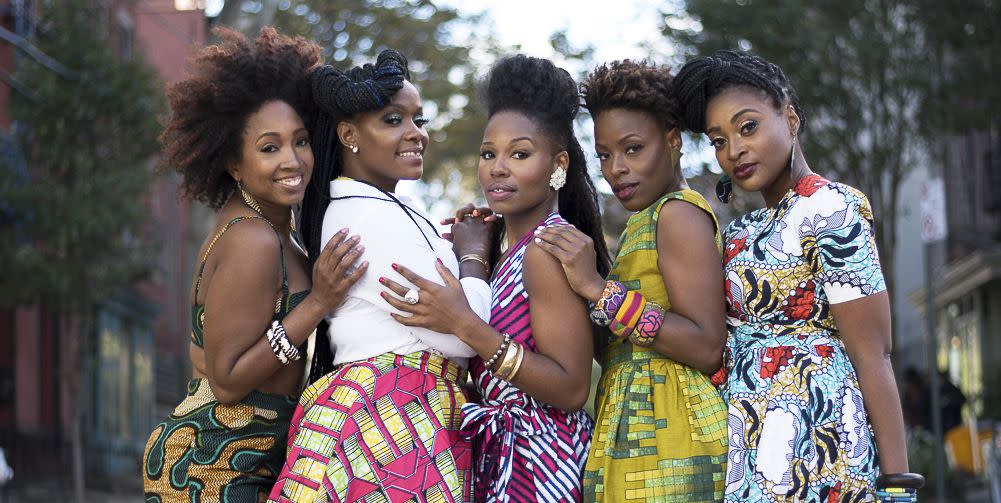
Blackness in Brooklyn has birthed some of the baddest, boldest and most beautiful gatherings in the world, and one of the best is Curly Girl Collective’s CURLFEST—a celebration of textured hair, community, and melanin magic.
Ten years ago, founders Gia Lowe, Charisse Higgins, Melody Henderson, Tracey Coleman and Simone Mair planted the seeds for CGC, as it's affectionately called, in an online chat group for naturalistas. Noticing that many of the members were anxious to meet up in person, the community expanded beyond the web.
In 2014, a sea of Afro’d, loc’d, and braided beauties gathered for the first CURLFEST in Brooklyn’s Prospect Park, sharing styling tips, product recommendations and pure joy. In 2019, the festivities moved to Randall’s Island Park and added a new market in Atlanta, Georgia, resulting in its largest turnout to date—over 45,000 attendees from 42 countries across the globe.
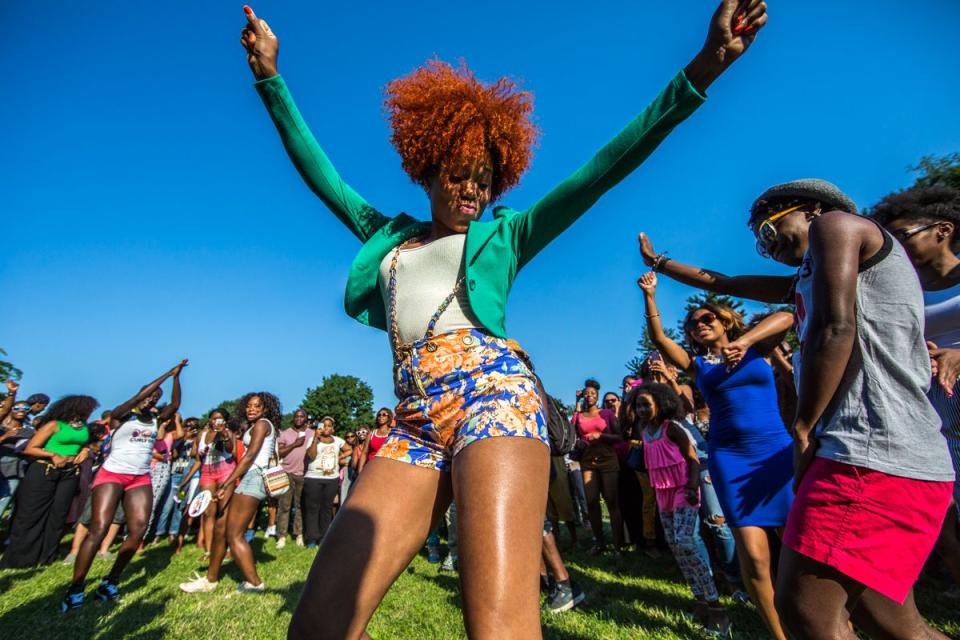
But in the wake of Covid-19, this year’s CGC naturally went digital, and Cosmo joined for the inaugural CURLFEST Beauty Summit, which featured virtual masterclasses, conversations, and appearances from trailblazers like Erykah Badu and Taraji P. Henson.
In a year marked by social unrest and a racial reckoning, CGC’s mission of affirming women of color is more vital than ever. Next year, the collective is celebrating a decade in the Black beauty game with the launch of a commemorative book, CURLFEST, 5 Years in Brooklyn. We caught up with co-founder and strategic partnerships director Gia Lowe to reflect on all the magic of their journey.
Cosmo: Let’s talk about the early beginnings of CGC. How did you first come together and what was the impetus for creating this space?
Gia Lowe: Back in 2009 or so—before the Instagrams of the world—there was a group of us that found each other online through word of mouth and referrals. It was a Google group called The Natural Hair Thread. We were at the beginning of this modern resurgence of the natural hair movement, exchanging tips about the best products for our beauty needs because we weren’t finding things out in the world [that worked for us]. We were also having real conversations that faced our community like, ‘How do you show up to interviews as a Black woman with natural hair? Do you throw on a wig? Do you throw on a weave? What is dating like in this space? What are the challenges that we’re facing?’ We were exchanging ideas about life that were rooted in hair.
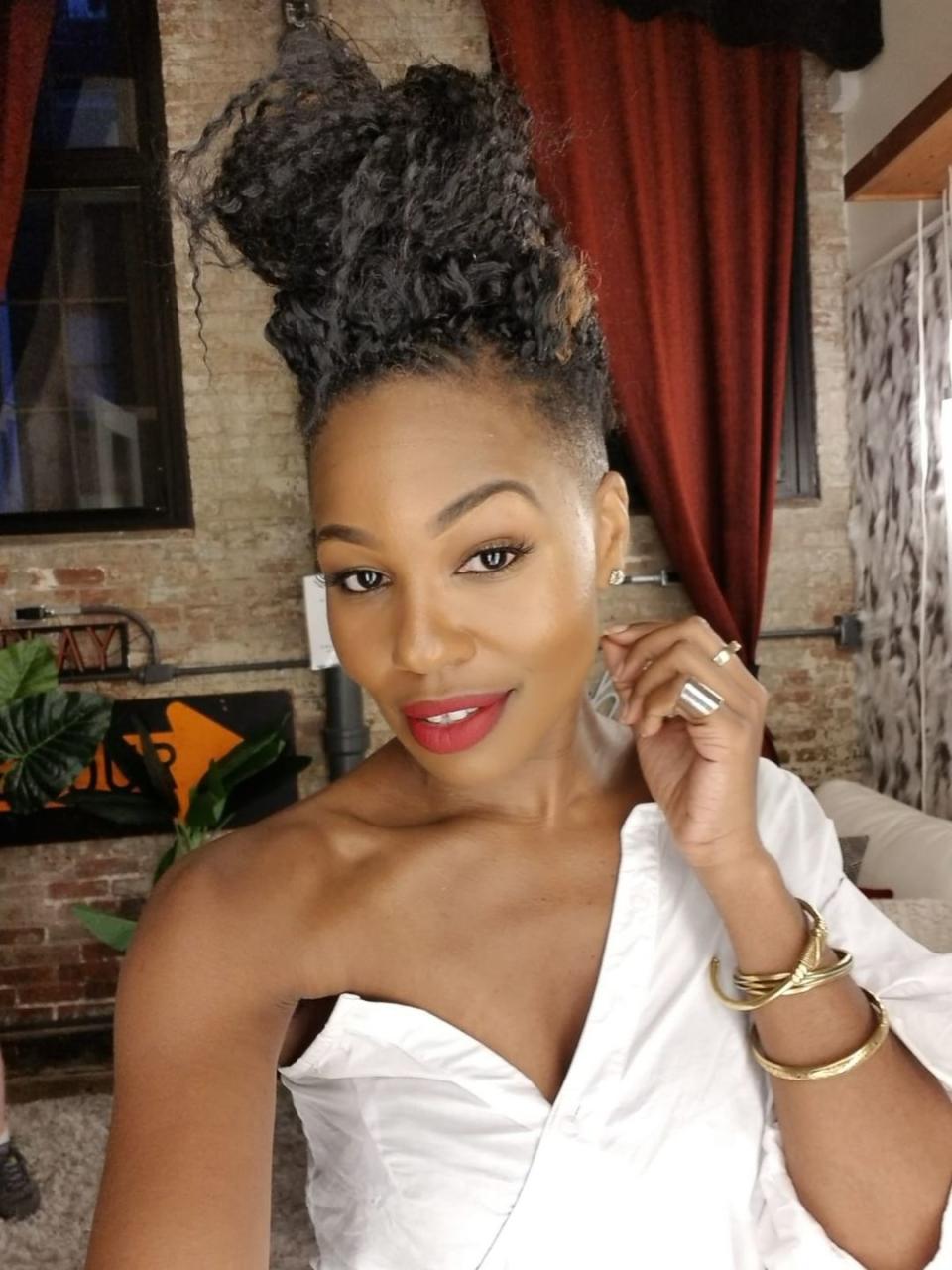
Cosmo: How did you transition to taking these conversations offline and creating a physical experience?
GL: Around that time our list consisted of about 100 people from all over the world, but a small group of us started gathering at our co-founder’s apartment in Brooklyn. It was great to connect, meet in person, and not feel like you had to code switch. We wanted to offer this to more people, so in May of 2011 we created our first experience—Collective Expressions. It was at an art gallery in Chelsea and we had a female artist create a live painting on the mini stage. There was a product swap where people could exchange items and Titi and Miko Branch of Miss Jessie’s did a live ‘big chop,’ which everyone loved. The ‘big chop’ really resonated with women who had just started their natural hair journey and were figuring out what’s next.
Cosmo: So much of CGC’s magic lies in your ability to incorporate those creative elements while staying on the pulse of what this community is truly buzzing about. How did you decide which elements to include in that first event while still shaping the brand’s DNA?
GL: At the core of it, we were creating for us and by us. Since we started as a Google group, we were data collecting and compiling information on the things that we wanted and needed all along. From our hair, to our careers, to our multi-hyphenated selves we are not a monolith—we listened to what brought our community joy and our love for art kept coming up. We brought that to the event, and that’s why it was called Collective Expressions. Our second event, Curl Crush, was a speed dating beauty experience featuring dope people in the industry like Anthony Dickey of Hair Rules, Urban Bush Babes and Karen Tappin of Karen’s Body Beautiful. Our third event, His Voice, Her Hair: Mane Attraction brought men into the conversation. It was always about bringing what we have not yet seen to the fore.
Cosmo: How did you morph into an agency that consults with brands on the needs of Black women?
GL: It happened pretty organically. The response to our early events was great. It felt like we were giving back, paying it forward, educating and informing, and we started to become clearer about our mission and what we could do with the collective. Brands loved what we were doing and started saying, ‘we’re launching this new thing, can we work together?’ Or, ‘we want to learn more.’ We help brands that are trying to identify ways to effectively reach this audience and understand us a little better. As Director of Strategic Partnerships, I have some amazing conversations with our partners and get to design what those collaborations will look like
Cosmo: How do you balance your connection to grassroots and indie brands, while taking on large corporate partners?
GL: As a Black-owned business that is self-funded itself, it’s about making sure we’re aligned with brands that are aligned with us—while also striking the balance of how to scale and grow. A core element of our business has always been to offer a space for brands that are emerging. We listen to our community and we are the community, so we have a visceral understanding of brands that resonate with our audience when it comes to things like hair, skin and nails. When it comes to the more lifestyle-focused companies like the Hulus, Googles and Netflixes of the world, we look for partners who at the core of their business are invested in having culturally congruent, authentic conversations and impactful interactions with this community.
Cosmo: You’ve collaborated with many burgeoning brands. Which ones have you been the most excited about?
GL: That’s a really nice thing to reflect on. At the first CURLFEST in 2014, there were two brand partners whose early beginnings we’re excited to have been a part of. The first is Eden Body Works, who at the time was an emerging Black, woman-founded haircare line. The second is Curls, who is on all kinds of shelves now. Another is Lip Bar—I remember [the founder] Melissa wanted to pull up to our event with her truck and I was like, ‘no Melissa they won’t let us do that, but we can give you a table!’ Now Lip Bar has expanded in every direction.
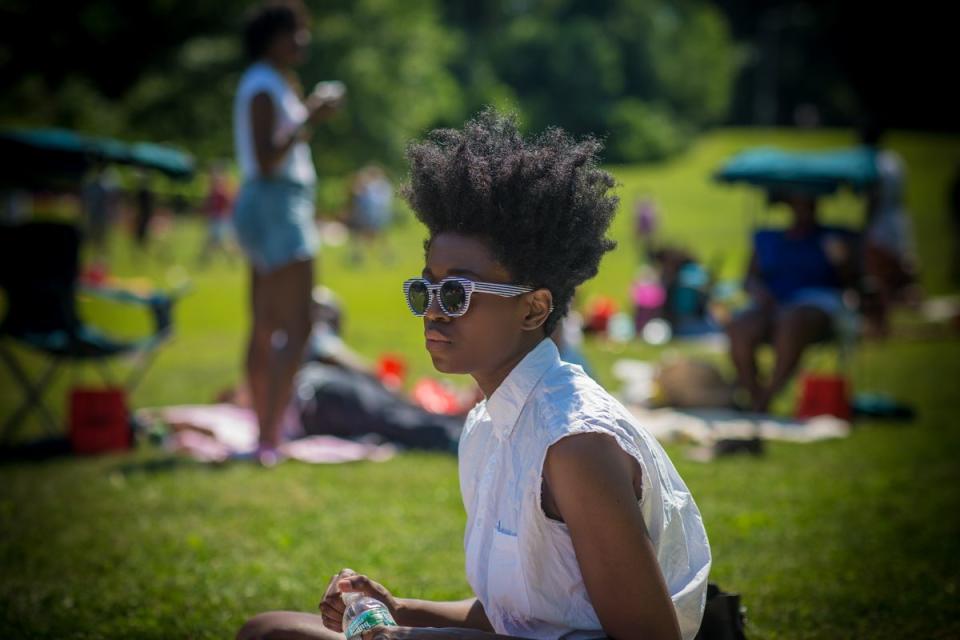
Cosmo: After 5 years in Brooklyn’s Prospect Park, you moved CURLFEST to Randall’s Island in 2019. As a Brooklynite, I know how much that event meant to the culture. What went into the decision to move?
GL: We were so excited that CURLFEST was birthed in Brooklyn. It’s a part of our story and it grew there each year exponentially. The first year we were at about fifteen hundred attendees. By the second year we were surpassing five thousand, by the third year we were at ten thousand and by the fourth, twenty thousand. Brooklyn is at the heart of our founders and community and we will still do micro-experiences there. But to keep it one hundred, there were logistical places that just weren’t supported by the city. This was a first-of-its-kind beauty festival and cultural tentpole experience. There were things we needed in place as the event kept growing and we just weren’t getting them. There are so many things that Black women founders experience as they build their business and have to go into rooms where we’re the only ones.
Cosmo: But the show must go on and those setbacks didn’t get in the way of your event.
GL: The transition to Randall’s Island was huge. When we started back in 2013, we were doing everything—putting down tablecloths, throwing out trash after the event, and hosting it. We would come early to set up and then change clothes before the event in the back of a UHAUL. By the time we got to Randall’s Island, we had a production company in place to handle set up and logistics. It was the first time that we were able to actually arrive to our event already dressed—that was such a big deal for us! We’re excited to do it again in 2021 at Randall’s Island, pending...all the things.
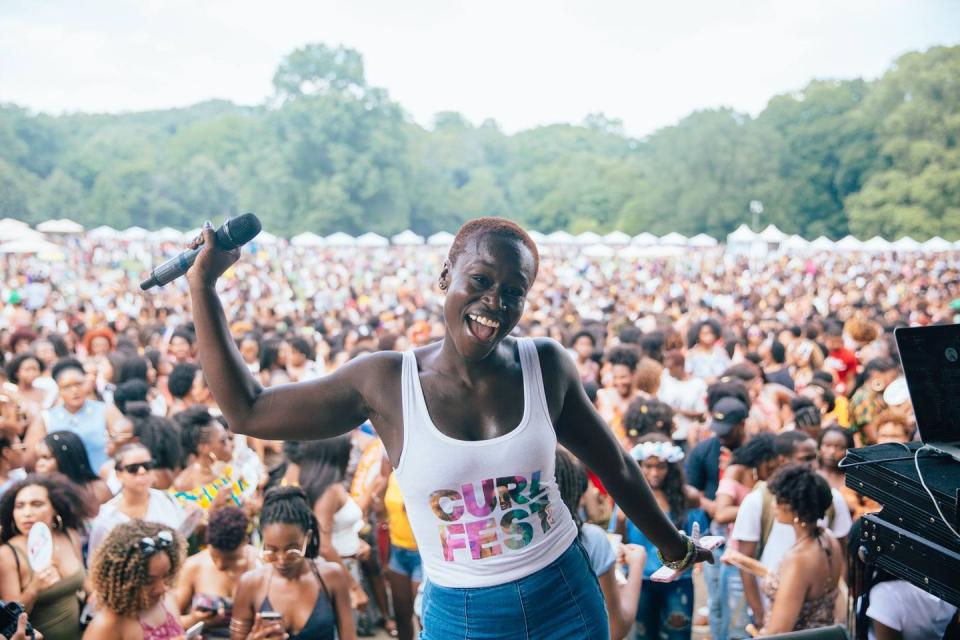
Cosmo: You also expanded into Atlanta last year.
GL: We asked our community where they would like to see CURLFEST next and Atlanta was at the top of the list, so that’s where we went. Nearly ten thousand people came to CURLFEST Atlanta, which was amazing. We also added a second event in Atlanta that weekend called Roller Set. It was a ‘90s-themed skating party that was a play on the roller sets and doobies that we wore back in the day. 2019 was a year of major expansion for us, from moving CURLFEST to Randall’s Island and launching in Atlanta to creating the Roller Set party.
Cosmo: Let’s talk about the pivot you made this year: debuting the CURLFEST Beauty Summit in the wake of Covid-19.
GL: At the top of the year, we had all these plans in place for our annual festival, but by the time February and March hit, it was like, ‘is this happening?’ Thankfully with brands like Carol’s Daughter, Dove, and Cosmopolitan as our media partner, we put together something that is different than CURLFEST—a virtual beauty summit that allowed us to dive into beauty in a different way.
Cosmo: Interestingly, while this particular event was new for CGC, the virtual space isn’t foreign to your audience since you started out online. How did the community respond?
GL: The response was one of gratitude and so much support. We got so many DMs and notes saying, ‘thank you for still doing this,’ ‘I learned this from the event,’ or ‘I connected with this person in chat.’ For the first time, we delivered the famous CURLFEST gift bags directly to people’s doorsteps, so they were doing unboxing and posting them. We had masterclasses and fireside chats; Erykah Badu and Masego blessed us with performances. In the age of watching three or four-minute Reels and TikToks, it was really special for us to see folks watch the full day of programming.

Cosmo: There is a unique opportunity for Black business owners to seize this moment and the sudden buzz around funding brands of color sparked by the social unrest of this year. What advice would you give to these entrepreneurs in terms of strategy during this time?
GL:For the business owners who are very clear about their ‘why’ and who have elements of their infrastructure already in place, this is a great time to seize the moment. For the startup folks, I would say perhaps this is the time to hire a consultant to help you strategically figure out how to utilize any resources that are coming your way. The last thing you want to do is receive funding and have no idea what to do with it or misuse it in ways that don’t serve your brand. Finally—whether it be through prayer or going into your bank of words and affirmations—check in with yourself to determine if you’re starting that new business just because the time is hot or if you have a legit calling. Take some time to get clear with yourself; journal it, use your tools, and go after it.
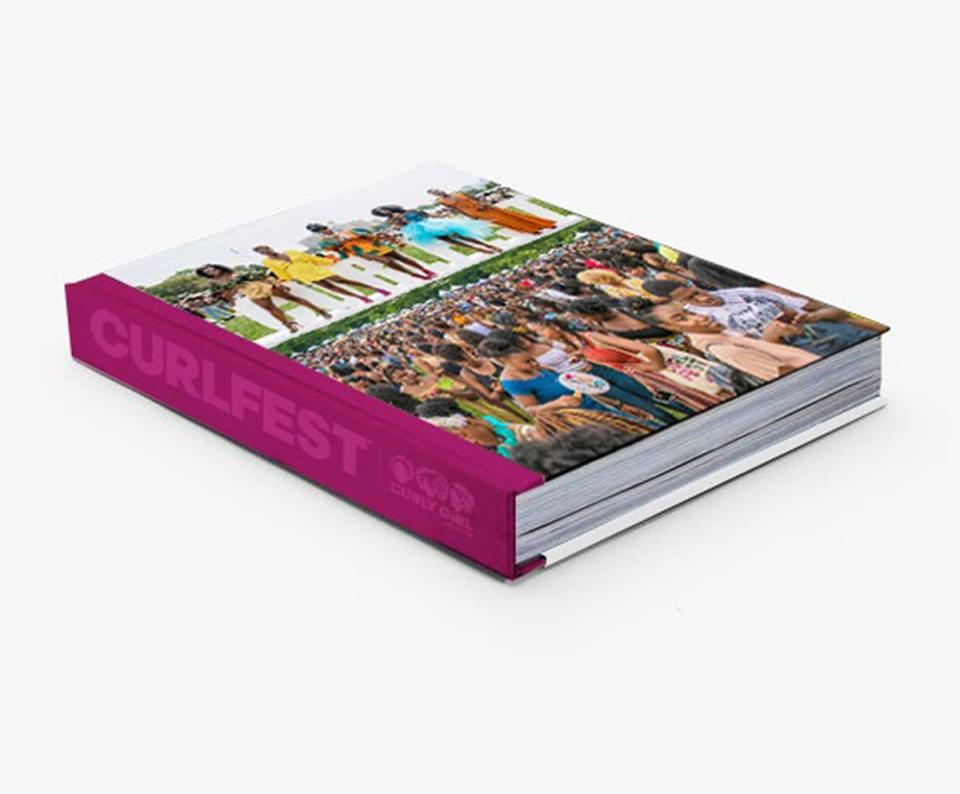
Cosmo: What can you share about your forthcoming book, CURLFEST, 5 Years in Brooklyn?
GL: The idea for the book is two or three years old. The started with us wanting to pull together all of the powerful images of CURLFEST through the years and gift them to partners. Then in 2020 when we were looking for ways to galvanize our community, we were like, ‘let’s acknowledge that for several years we’ve been creating an experience that has been growing and evolving for some time. Let’s chronicle the evolution of Black beauty through the lens of CURLFEST in the form of a beautiful coffee table book.’ We commissioned five black female authors to create poignant short form pieces for the book. It tells the story of our beginnings and is filled with imagery of pure celebration and joy on the CURLFEST lawn and also highlights iconic spaces in Brooklyn. It’s a love letter to [the borough] and a love letter to Black women, showcasing and highlighting our beauty.
Follow @curlygirlcollective on Instagram and visit curlfest.com for more information.
The interview has been edited and condensed for clarity.
You Might Also Like

